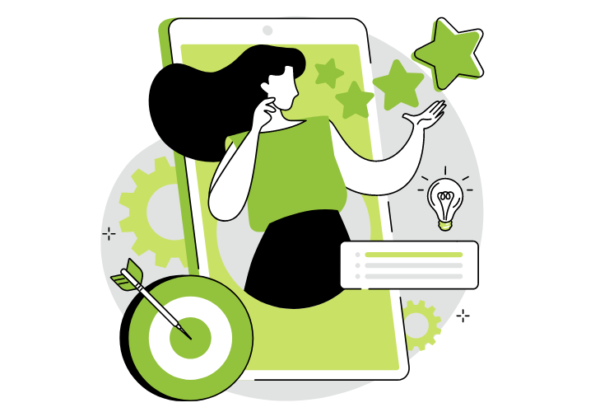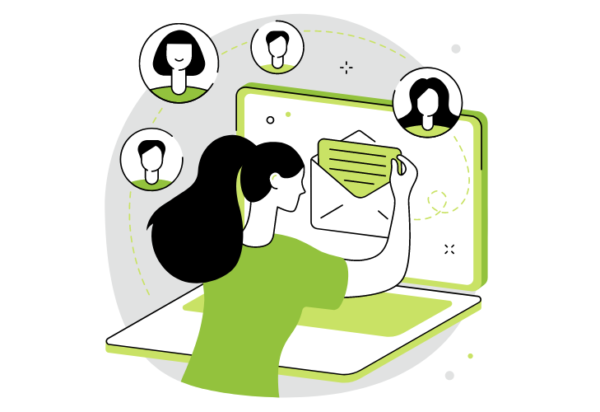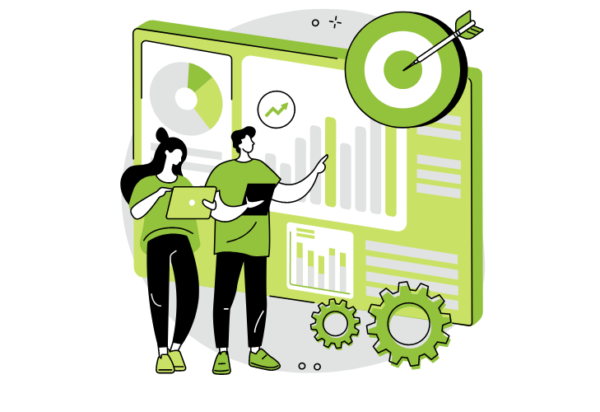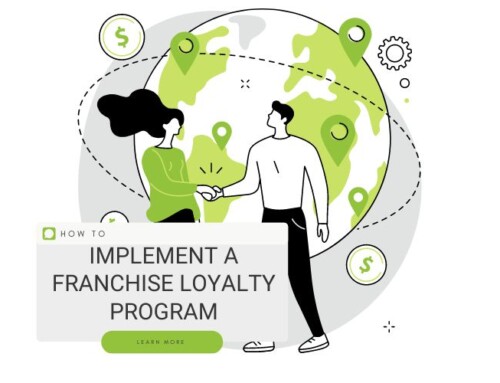Unlock Key Features to Empower Your Business
The bLoyal platform offers comprehensive features to help businesses enhance customer relationships, drive sales, and optimize marketing efforts by leveraging personalized promotions, advanced customer segmentation, rewards systems, and data analytics. Here’s an in-depth overview of its key features and how they can catapult your business to success.
Custom Data Platform
Collect, aggregate, and normalize customer data and transactional information from various sales channels. bLoyal’s custom data platform is a powerful tool that provides a unified view of customer interactions and behaviors, facilitating data-driven decision-making, personalized marketing efforts, and improved customer engagement strategies.
Aggregation of data: The custom data platform collects data from different sources within your business, including physical point-of-sale (POS) locations, eCommerce websites, mobile apps, and more. This data could include customer profiles, purchase histories, preferences, interactions, and other relevant information.
Normalization: Once the data is collected from various sources, it is normalized. This involves structuring the data in a consistent format, making it easier to analyze and compare across different channels. Normalization ensures that data inconsistencies and discrepancies are addressed, leading to a more accurate representation of customer activity.
Centralized storage: The aggregated and normalized data is stored in a centralized database or repository. This centralized storage makes it convenient to access and analyze the data and generate insights that can inform business strategies.
360-degree customer view: By combining data from multiple touchpoints, businesses can gain a 360-degree view of each customer. This view includes their purchase history, preferences, communication interactions, loyalty program participation, and more. A comprehensive understanding of each customer enables businesses to offer personalized experiences and targeted marketing campaigns.
Improved analytics: Businesses can perform more accurate and insightful analytics with a unified dataset. Businesses can identify growth opportunities, optimize inventory management, enhance customer service, and refine marketing efforts by analyzing patterns and trends across different sales channels.
Data-driven decision-making: The aggregated and normalized data is the foundation for informed decision-making. Businesses can identify areas of improvement, allocate resources effectively, and tailor their strategies to cater to specific customer segments.
Enhanced customer engagement: Businesses can engage customers more effectively with a clearer understanding of customer preferences and behavior. They can create relevant promotions, personalized recommendations, and loyalty programs that resonate with individual customer segments.

Integrated Communications
Enhance customer engagement, drive conversions, and support consistent branding across various communication channels. bLoyal’s integrated communications feature empowers you to communicate with your customers seamlessly through multiple channels, ensuring timely and relevant interactions.
SMS communication: Businesses can send short message service (SMS) notifications directly to customers’ mobile phones. SMS messages deliver concise information, such as promotions, order updates, appointment reminders, and time-sensitive alerts. SMS notifications can increase customer engagement and drive immediate action.
Email communication: Email remains a powerful tool for delivering more detailed and visually appealing content. Businesses can send personalized email messages to customers, including promotional offers, newsletters, product recommendations, and transaction confirmations. Email allows for greater flexibility in conveying information and building brand loyalty.
Customer alerts at POS: At physical point-of-sale locations, bLoyal’s Integrated Communications feature allows businesses to display real-time alerts to customers during checkout. These alerts can include personalized promotions, loyalty program updates, or relevant messages. This in-store communication helps capture customers’ attention at a crucial moment and can encourage them to take advantage of current offers.
eCommerce checkout communication: Similarly, when customers purchase through eCommerce websites, bLoyal enables businesses to display alerts and messages during checkout. These alerts can help inform customers about ongoing promotions, available discounts, or special offers related to their current purchase.
Key Benefits
- Personalization: Businesses can tailor messages based on customer preferences, purchase history, and behavior, creating a more personalized and relevant communication experience.
- Timely information: Whether through SMS, email, or alerts, customers receive timely information that enhances their shopping experience and keeps them informed about promotions and updates.
- Cross-channel consistency: The ability to deliver consistent messaging across various channels helps reinforce brand identity and messaging, ensuring a cohesive customer experience.
- Increased engagement: Interactive communication at POS and eCommerce checkout points can capture customers’ attention, driving higher engagement rates and potentially leading to increased sales.
- Targeted marketing: By leveraging customer data, businesses can segment their audience and send targeted communications to specific customer groups, increasing the likelihood of successful campaigns.
- Customer retention: Effective communication can enhance customer satisfaction and loyalty, leading to repeat purchases and long-term customer relationships.

Manual and Automated Segmentation
Create more targeted and relevant marketing campaigns, promotions, and communication strategies. bLoyal’s manual and automated segmentation feature is designed to help you categorize your customer base into distinct groups based on various criteria, such as transactional history, demographic information, and behavioral patterns.
Manual segmentation: Businesses can define and create their customer segments based on specific criteria in manual segmentation mode. This could involve creating segments like “Frequent Shoppers,” “High-Spending Customers,” “Loyal Members,” or any other group that aligns with their business goals. Manual segmentation provides high customization and control over the segmentation process.
Automated segmentation: Automated segmentation leverages data-driven algorithms to categorize customers into segments dynamically. This process is often based on predefined rules and criteria. For instance, customers who make frequent purchases or exhibit similar buying patterns might be automatically categorized into a “Frequent Buyers” segment. Automated segmentation is efficient and scalable, allowing businesses to categorize many customers based on consistent criteria quickly.
Segmentation Criteria
The criteria used for segmentation can encompass a variety of factors, including:
- Transactional data: Purchase history, order frequency, average order value, last purchase date, and products purchased.
- Demographic information: Age, gender, location, income level, and other relevant demographic data.
- Behavioral patterns: Engagement with marketing campaigns, interaction with loyalty programs, website visits, and promotion response.
- Loyalty program participation: Segments can be created based on loyalty program membership, points earned, and rewards redeemed.
Key Benefits
- Targeted campaigns: Segmentation allows businesses to create campaigns tailored to the preferences and behaviors of specific customer groups, increasing the likelihood of engagement and conversions.
- Personalized messaging: Segmented groups can receive personalized messages that resonate with their interests, improving customer satisfaction.
- Optimized marketing spend: Businesses can optimize their budget and resources by directing marketing efforts towards well-defined segments.
- Increased relevance: Relevant offers and promotions result in higher customer engagement, as customers receive offers that align with their needs and preferences.
- Improved retention: Customized communication and promotions can enhance customer loyalty and encourage repeat purchases.
- Data-driven insights: Segmentation helps uncover patterns and trends within customer data, enabling businesses to make data-driven decisions.
- Scalability: Automated segmentation efficiently categorizes large customer databases, allowing businesses to manage and engage with diverse customers.

Loyalty Engine
Target specific customer groups and automatically apply benefits in-store and online, enhancing customer engagement, loyalty, and overall satisfaction. bLoyal’s loyalty engine creates effective and engaging loyalty programs that offer real-time rewards and integrated benefits.
Real-time rewards: bLoyal’s loyalty engine allows businesses to set up loyalty programs offering customers rewards, points, or benefits based on spending and interactions. These rewards are tracked and applied in real-time, meaning that customers can see the value of their accumulated rewards and benefits immediately after making a purchase.
Integrated benefits: Rewards and benefits are seamlessly integrated across various sales channels, including physical stores and online platforms. This integration ensures that customers can access and redeem their rewards, whether shopping in-store or purchasing online.
Segmentation for targeting: The loyalty engine supports segmentation, where customers are grouped into specific segments based on factors like purchase history, demographics, or behaviors. This segmentation allows businesses to create targeted campaigns tailored to each customer group’s preferences and needs.
Automatic application of benefits: When segmentation is applied, bLoyal’s loyalty engine can automatically apply relevant benefits, discounts, or rewards to specific customer segments. This means eligible customers will see their benefits automatically reflected in their transactions, whether shopping in a physical store or online.
Key Benefits
- Enhanced customer engagement: Loyalty programs encourage customers to engage more frequently with the business to earn rewards, increasing interaction and repeat purchases.
- Immediate gratification: Real-time rewards provide instant gratification to customers, making them feel valued and motivated to continue engaging with the business.
- Cross-channel consistency: Integration across sales channels ensures a consistent customer experience, regardless of where customers purchase.
- Data-driven insights: Loyalty programs generate valuable data on customer behavior, preferences, and spending patterns, which can inform future marketing strategies.
- Increased loyalty: Engaging loyalty programs fosters stronger customer loyalty and retention, reducing churn and increasing customer lifetime value.
- Personalization: With segmentation, businesses can create personalized offers that resonate with different customer groups, resulting in higher conversion rates.
- Automation efficiency: The automatic application of benefits streamlines the process for customers and businesses, reducing manual efforts and potential errors.

Memberships and Subscriptions
Offer your customers curated membership programs and product subscriptions. bLoyal’s memberships and subscriptions feature enables you to provide customer’s personalized experiences and ongoing value, fostering long-term relationships and repeat business.
Membership programs: With bLoyal, businesses can create and offer membership programs that provide exclusive benefits and perks to members. Customers can enroll in these programs to access special discounts, early access to products, unique events, and other rewards. Membership programs can be tailored to cater to different customer segments and their preferences.
Product subscriptions: This feature allows businesses to offer customers the option to subscribe to specific products or services. Customers can receive certain products regularly, such as weekly, monthly, or quarterly. This is particularly useful for products customers frequently purchase, such as consumables or beauty products. Subscriptions provide convenience for customers and ensure a steady revenue stream for the business.
Curated experiences: Businesses can curate membership benefits and subscription offerings to align with their brand and the interests of their target audience. This customization adds value to the customer experience and encourages continued engagement.
Customer self-management: bLoyal’s platform enables customers to manage their memberships and subscriptions on their terms. Customers can easily update their preferences, change subscription frequencies, add or remove products, and view their membership benefits through user-friendly interfaces.
Key Benefits
- Customer retention: Membership programs and subscriptions foster customer loyalty by providing ongoing value and benefits, making customers more likely to stick around.
- Predictable revenue: Subscription models offer a steady revenue stream for businesses as customers commit to regular purchases.
- Convenience: Subscriptions offer customers a convenient way to receive products they use frequently without the hassle of repeated ordering.
- Personalization: Businesses can enhance customer experience and satisfaction by tailoring memberships and subscriptions to customer preferences.
- Data collection: Memberships and subscriptions provide businesses with valuable data on customer preferences, allowing for better product and marketing strategies.
- Upselling and cross-selling: Businesses can leverage memberships and subscriptions to upsell or cross-sell related products or services to existing customers.
- Engagement and brand loyalty: Exclusive benefits and curated experiences encourage customers to engage with the brand and develop a stronger sense of loyalty.

Data Analytics
bLoyal’s data analytics feature gives you various tools and capabilities to analyze and derive insights from your customer data and operational performance, including SQL reporting, dashboards, and integration with Microsoft Power BI for more advanced data visualization and analysis.
SQL reporting: SQL reporting allows businesses to generate custom reports using SQL queries to extract specific insights from aggregated and normalized customer data. This feature provides the flexibility to query the data based on specific criteria, helping businesses uncover patterns, trends, and metrics that inform decision-making. SQL reporting is beneficial for businesses that require highly customized and in-depth analysis.
Dashboards: Dashboards are visual representations of key metrics and performance indicators in a user-friendly and graphical format. bLoyal’s dashboards allow businesses to create and view summarized data in real-time. These dashboards comprehensively view critical business data, such as sales trends, customer engagement, loyalty program performance, and more. Dashboards provide a quick and intuitive way to assess the business’s overall health and identify improvement areas.
Power BI integration: Microsoft Power BI is a robust business intelligence tool with advanced data visualization and analysis capabilities. bLoyal’s integration with Power BI allows businesses to connect their customer data and insights to Power BI, enabling more sophisticated and interactive data visualizations. Power BI’s features include interactive dashboards, reports, and the ability to create complex data models and relationships. This integration empowers businesses to explore their data in greater depth and uncover insights that may take time to be apparent.
Key Benefits
- Informed decision-making: Data analytics tools provide actionable insights that guide strategic and operational decisions, improving business outcomes.
- Identifying trends: Businesses can identify patterns, trends, and anomalies in customer behavior and sales data, helping them adapt to changing market conditions.
- Performance monitoring: Dashboards and reports allow businesses to monitor their real-time performance metrics, enabling timely interventions and optimizations.
- Personalization: Businesses can create personalized marketing campaigns and offers that resonate with different customer segments by analyzing customer data.
- Data-driven strategy: Insights derived from data analytics support evidence-based strategies that drive business growth and customer engagement.
- Visual communication: Visualizations make complex data easy to understand and communicate to various organizational stakeholders.
- Competitive advantage: Effective data analysis can provide a competitive edge by uncovering opportunities and identifying areas for improvement that competitors might overlook.




